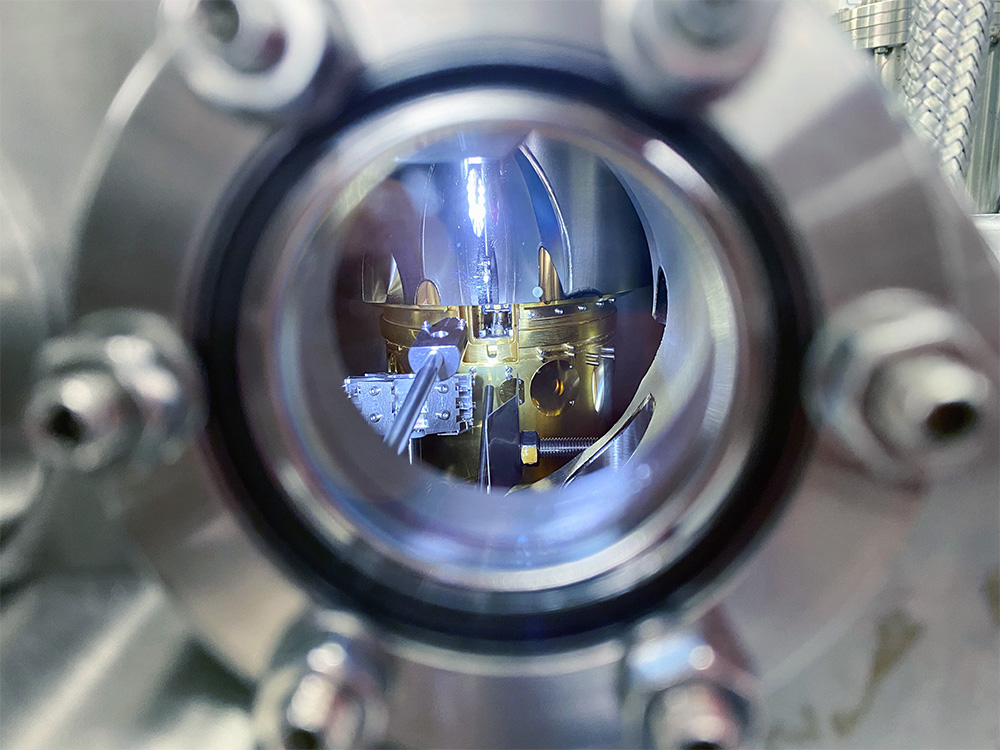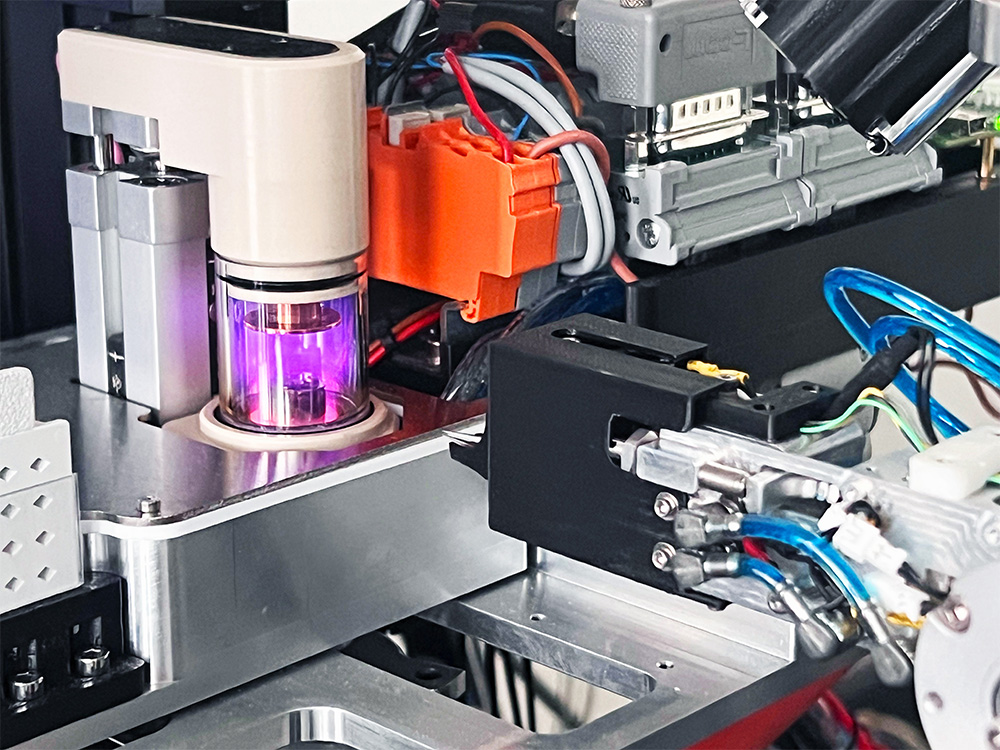New horizons.
Text und Fotos: Christine Möller
In the world of tiny structures, the boundaries between disciplines such as physics, chemistry, biology, medicine and materials science break down. We look at five examples where researchers meet — and extend — the boundaries of the nanoworld.
1. Beyond the realms of imagination.
Classical physics reaches its limits in the world of individual atoms, molecules and tiny structures on the scale of 1 to 100 nanometers. Here, at the atomic level, it is the laws of quantum physics that describe various nanoscale phenomena and bring us right to the edge of the imaginable world. Unlike classical physics, quantum theory often provides us only with probabilities rather than clear results. The nanoworld is also home to phenomena such as superposition, in which a particle appears to exist in multiple classical states simultaneously before measurement, and entanglement, in which the measurements for two particles can be dependent on one another. Einstein referred to the latter as “spooky action at a distance”.
2. Focusing on surfaces.
Surface properties play an important role in the nanosciences because tiny structures have enormous surface areas relative to their volume, thereby benefiting chemical reactions that take place primarily on surfaces. In this context, researchers from the University of Basel are studying new compounds that are suitable for use as catalysts. At the boundaries between different materials or phases (solid, liquid or gas), some nanomaterials also exhibit entirely new and unusual properties. Among other topics, researchers in Basel are investigating materials that behave like insulators on the inside but conduct electricity on the surface without dissipation.
3. Boundaries of the visible world.
Unlike larger objects, individual atoms and molecules measuring a few nanometers across cannot be visualized using an optical microscope. In fact, these particles only became “visible” with the development of advanced technologies such as electron and scanning probe microscopes, various types of which are used at the University of Basel. Microscope specialists at the university are constantly refining these instruments for specific applications with a view to extending the boundaries of the visible world. For instance, electron microscope images allow researchers to determine the three-dimensional structure of individual proteins — a key step in developing substances such as active pharmaceutical ingredients. Scanning probe microscopes can visualize individual atoms or even film how a natural nanomachine works to regulate the transport of biomolecules into and out of the cell’s nucleus.
4. At the limits of measurement.
Nanoscientists also reach the limits of what is possible when they take measurements in the nanostructures they are studying. Forces that act between individual molecules cannot be measured using methods from the macroworld. Likewise, new sensors with greater sensitivity are also required to measure magnetic or electric fields and the extremely small electrical currents that occur in nanostructures. These investigations often make use of scanning probe microscopes for their ability not only to visualize the structures but also to measure various chemical and physical parameters.
Researchers from the University of Basel have analyzed the weakest bonding forces between individual atoms in nature. These “van der Waals forces” play a vital role in nature and help geckos “stick” to the ceiling, for example.
5. Analysis with almost no material.
In many cases, the problem researchers face is the limited availability of the materials they want to study. With this in mind, nanoscientists are developing methods that can make do with tiny sample quantities, such as miniature laboratories on a chip. Made up of tiny channels measuring a few micrometers or nanometers across, these “lab-on-a-chip” systems are used to process and analyze small quantities of material. They represent a particularly promising innovation in the field of diagnostics, where they can reliably analyze tiny sample quantities in a short period of time.
More articles in this issue of UNI NOVA (November 2023).


